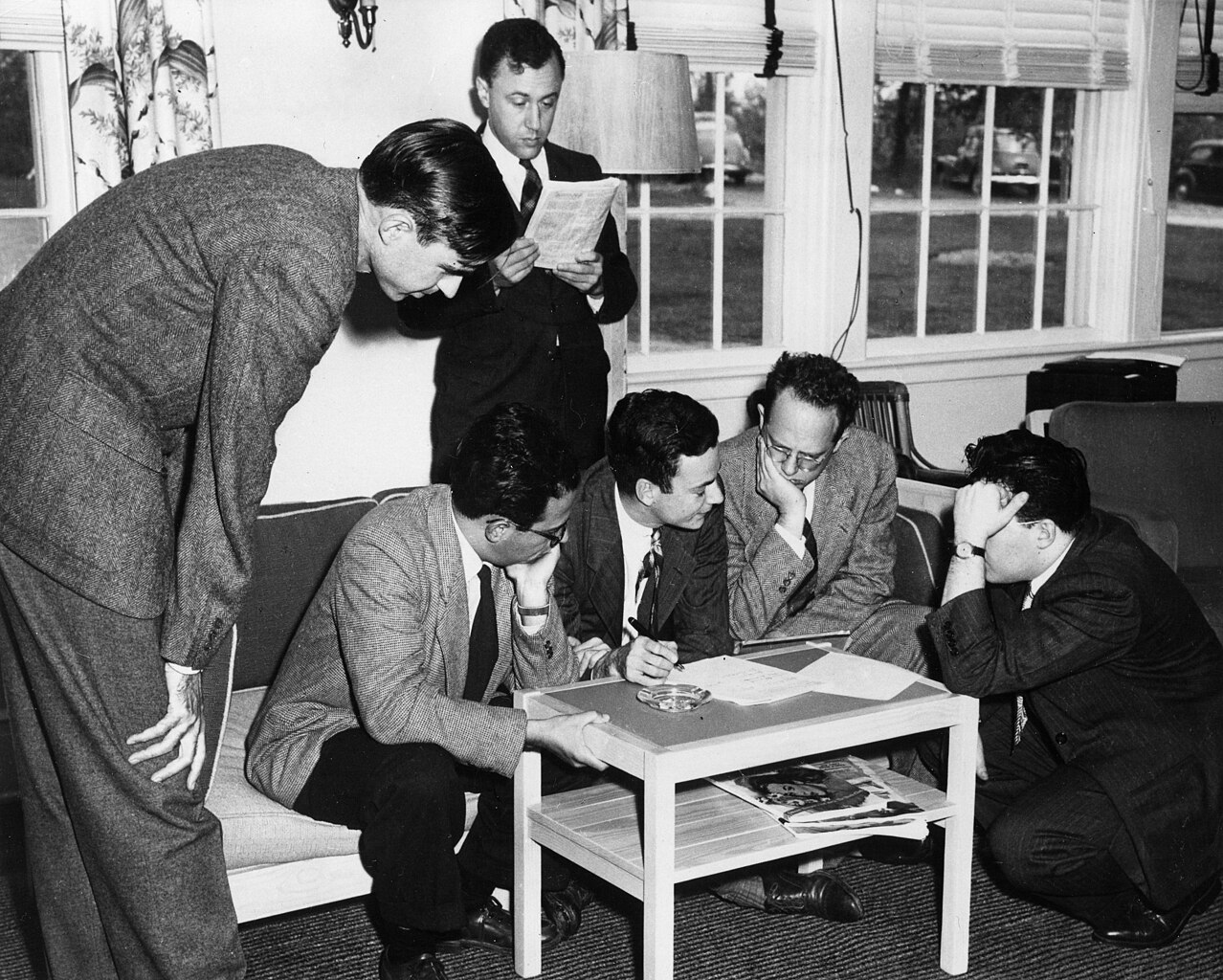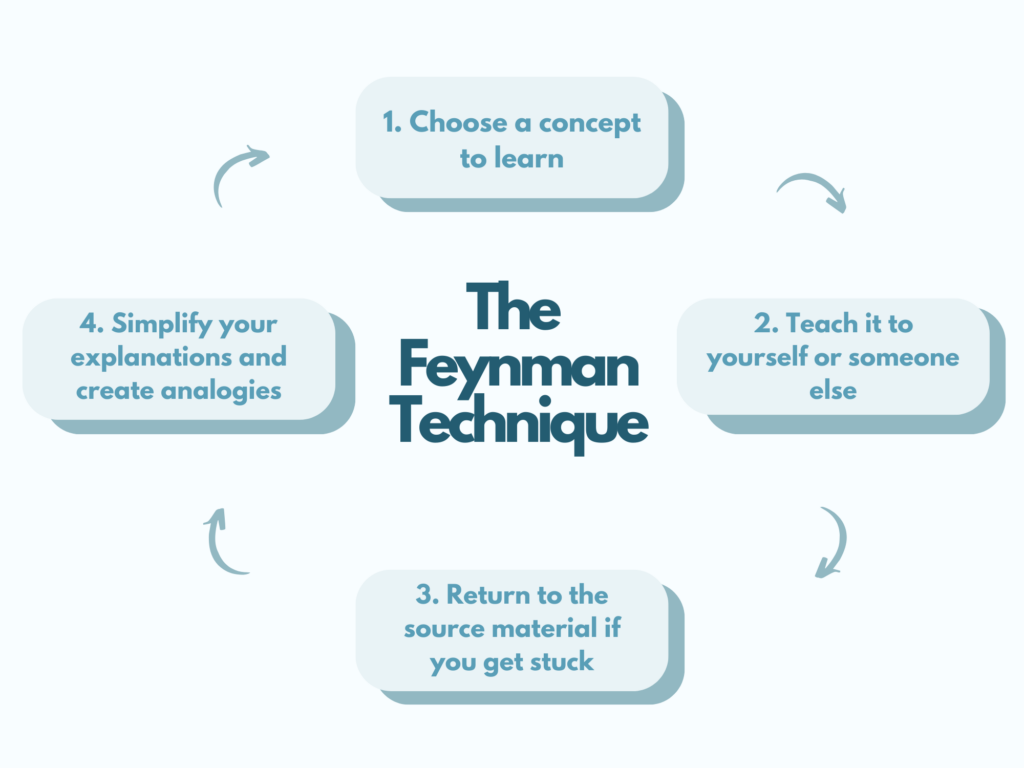If you’re tackling Year 12 and finding it hard to make complex concepts stick, you’re not alone. With so many subjects, ideas, and skills to master, traditional rote memorisation often falls short. Enter the Feynman Technique: a powerful, four-step learning strategy that helps you turn confusion into clarity and memorisation into true mastery.
Developed by Nobel Prize-winning physicist Richard Feynman, this technique rejects surface-level learning and instead promotes active engagement, simplification, and repeated refinement. It’s ideal for high school students, especially those preparing for VCE, HSC, QCE, WACE, and other Year 12 curriculums. Whether you're revising photosynthesis in Biology, the concept of price elasticity in Economics, or Shakespearean quotes in English, the Feynman Technique can help you understand and remember better.
What Is the Feynman Technique?
The Feynman Technique is a four-step process designed to help you learn anything deeply:
- Choose a concept to learn
- Teach it to yourself or someone else
- Return to the source material if you get stuck or to check your understanding
- Simplify your explanations and create analogies
Feynman once wrote "Notebook of Things I Don’t Know About" and worked tirelessly to take apart concepts and reassemble them so he could understand them from the ground up. His belief? If you can’t explain it simply, you don’t understand it well enough.
Step 1: Choose a Concept to Learn
Start by selecting a specific concept you’re struggling with or want to understand better. It should be narrow enough to explore in one to two study sessions. Write it at the top of a fresh page.
If you're using a syllabus or textbook, pick a foundational concept like ‘Thermodynamics’ in Physics, ‘Market Equilibrium’ in Economics, or ‘Cellular Respiration’ in Biology or the focus area of your next assessment or SAC. Avoid vague or broad topics like ‘Science’ or ‘History’.
Why this step matters:
- Helps you specifically identify what you don't yet know
- Encourages you to start small and build up
- Promotes a growth mindset
This is the first moment of intentionality. By naming and identifying what you don’t know, you take control of your learning and start a plan to specifically target your weaknesses.
Step 2: Teach It to Yourself or Someone Else
Now comes the magic: teaching. Once you have read about the concept or topic, imagine explaining the concept to someone with no prior knowledge — a younger sibling, a classmate, a pretend audience or even your dog. If you can’t find someone, teach it aloud to yourself, speak it out loud on a walk or write it out in plain language.
Try not to look at your notes until you really get stuck or find your explanations going in circles! Explain using your own words.
Why this step matters:
- Highlights gaps in your understanding
- Forces you to simplify and clarify your thinking
- Turns passive learning into active recall
If your explanation gets jumbled, you’ve just discovered a gap in your understanding. Congratulations! You now know where to improve.
Bonus tip 💡 Try recording a short video of yourself explaining the topic. Watch it back and rate how clearly you explained it.
Step 3: Return to the Source Material If You Get Stuck
If you hit a wall while teaching or writing, revisit your textbook, notes, or online resources to fill the knowledge gaps. Shut the book or close your notes and restart your explanation to your imaginary audience.
Why this step matters:
- Reinforces active learning through problem-solving
- Encourages iteration, not perfection
- Builds long-term memory by increasing cognitive effort
Each round of refinement is like adding another layer of concrete to your learning foundation. Keep going until your explanation flows effortlessly.
Step 4: Simplify Your Explanation and Create Analogies
The final step is to trim any fluff. Remove complex jargon and break the concept into parts that make sense to a beginner. We often use complicated or big words instead of simple and easily understandable language. Use analogies to relate it to something you already know.
Examples:
- Think of electricity like water flowing through pipes.
- Visualise the economy like a giant see-saw: demand on one side, supply on the other.
Why this step matters:
- Reinforces true understanding, not just memorisation
- Makes your brain create stronger neural pathways
- Prepares you to answer questions flexibly in exams
When you can explain quantum physics in terms of toast and jam, you’ve nailed it.
Why the Feynman Technique Works for Year 12
1. It Prevents Self-Deception
It’s easy to assume you know something just because you’ve seen it before. The Feynman Technique proves whether you really understand it.
2. It Makes You a Better Communicator
Being able to explain complex ideas simply isn’t just good for tests; it makes you a clearer thinker and better writer.
3. It Boosts Exam Performance
By focusing on understanding instead of memorisation, you’re better equipped for those ‘apply’ and ‘evaluate’ questions that often make up the hardest parts of exams.
4. It’s Ideal for Any Subject
Whether you’re explaining Macbeth’s downfall in English or solving projectile motion problems in Physics, the technique scales across disciplines.
Examples of concepts to start with:
- English: Themes in The Crucible, literary devices
- Biology: Photosynthesis, osmosis, mitosis
- Chemistry: Stoichiometry, pH, redox reactions
- Legal Studies: Separation of powers, precedent, jurisdiction of courts
- Economics: Elasticity, market failure, cash rate policy
- Psychology: Conditioning, memory models, ethics in research
Using the Feynman Technique With Study Tools
To take it even further, combine the Feynman Technique with digital tools:
- Google Docs or Notion: Create a "Notebook of Things I Don’t Know Yet"
- Voice memos: Record and review your explanations
- Quizlet: Turn your simplified summaries into flashcards
- Trello: Create tasks with the four steps built in for each topic
Final Thoughts
If you want to learn rather than cram, the Feynman Technique is your secret weapon. It helps you think deeply, learn efficiently, and become an expert on your own terms. By using this technique consistently, you won’t just be preparing for Year 12 exams — you’ll be building a mindset that serves you for life. After all, real learning doesn’t come from memorising facts. It comes from understanding.
Ready to try it out? Pick a concept, grab a blank page, and start building your knowledge tower, one brick at a time.
If you found this guide helpful, you can find tutors on Learnmate who are passionate about helping you simplify, understand, and master your Year 12 subjects. View expert tutors today and make confident learning your new superpower!





